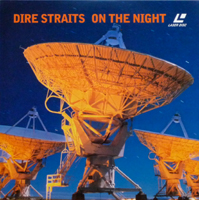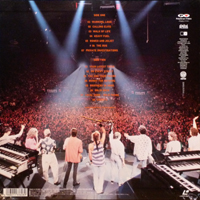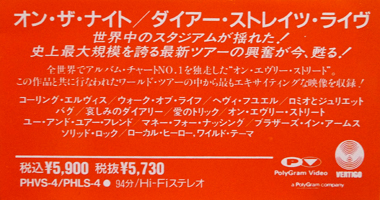Feyenoord stadium, Rotterdam, Holland, 31st May 1992 [B3, B4, B5, B6]
Les Arenes, Nimes, France, 20th May 1992 [A4, A5, A6, A7, B1, B2]
Les Arenes, Nimes, France, 21st May 1992 [A2]
- Warning, logo
- Calling Elvis
- Walk of life
- Heavy fuel
- Romeo and Juliet
- The bug
- Private investigations
- Your latest trick
- On every street
- You and your friend
- Money for nothing
- Brothers in arms
- Solid rock
- Wild theme
- Credits


